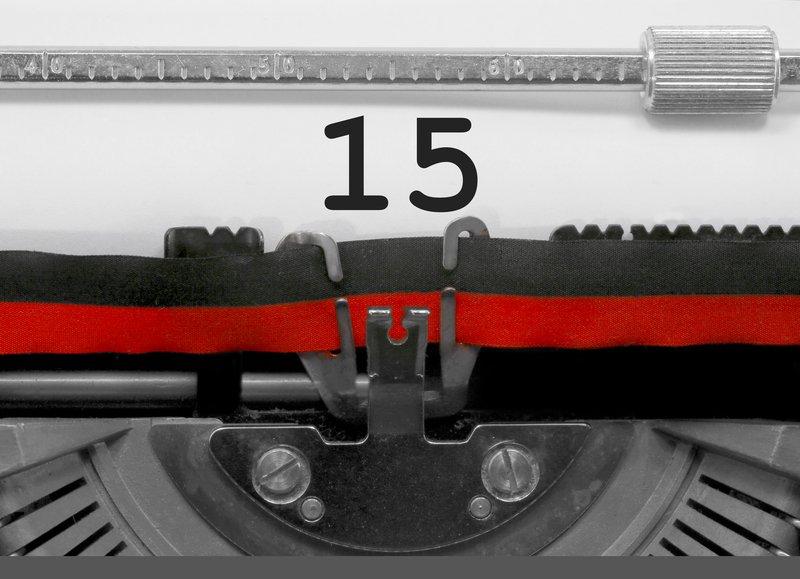For most business owners, selling their business is a once in a lifetime event. It’s also often the culmination of decades of hard graft so it’s important you get it right.
With so much at stake, we asked Clinton Lee of UK Business Brokers to help explain how you can get the best possible price from a buyer, when you are selling your small business.
When building up your business, you will have invested a huge amount of your time, energy and money so you will want to make sure you maximise the return when it comes to selling up. But without any previous experience to draw upon, it’s all too easy for business owners to sell their company for less than it is worth.
How to sell your business for the highest possible price
There are a few different ways to value businesses, but the most common is the “Earnings Multiple” where price is quoted as a multiple of annual profits (earnings).
For example, if your business is making a profit of £100,000 a year, and other businesses in the same industry are changing hands at a multiple of 6 x profits, it would be reasonable for you to go to market with a price tag of 6 x 100,000 or, £600,000.
However, as a business owner, you’ve probably been using a number of (completely legal) concessions and allowances in order to reduce your annual tax liability and retain more of what you’ve made. Such tax mitigation often involves demonstrating a lower level of profit by, for example, depreciating some assets.
You’ve probably also found tax efficient ways to draw money out of the company, such as paying your spouse a small salary to make use of their personal tax-free allowance.
Tax mitigation is great and everyone should take as much advantage of it as they can, but it has one drawback: it depresses the single most important metric used in calculating business value – the profit. This is not a problem most of the time, but it’s more than a bit inconvenient when you’re considering the sale of your business.
If tax wasn’t a consideration the same business in our example above may have shown £200,000 in profit taking the value of the business up from £600,000 to £1.2 million.
So how can you have your cake and eat it too? How can you declare as little profit as legally possible for tax purposes but not have “low profit” negatively influence the value of your business?
Fortunately, there is a way. Unfortunately, many owners of small businesses – businesses with revenue of under £5 million – are complete unaware of it. As a result these owners, even those who have spent years preparing for the sale, end up going to market at the wrong price and losing, sometimes, hundreds of thousands of pounds.
Before we come to the win-win of low-tax and high price, we need to examine why investors buy businesses.
The two price-influencers
Investors buy businesses for the return. They risk their capital – because buying a business is always risking capital – in order to gain access to future profit flows.
Free Tide Business Bank Account - £50 Cashback!

Open a free business current account to qualify + enjoy 12 months free transactions. Read our Tide review.
Two elements play an important part in the price they’re willing to pay: the value (and timing) of the profit they expect in future and their assessment of the level of risk involved in making this purchase. The lower the risk they perceive in the investment, the higher the price they are able to pay. The higher their profit expectation – based largely on the current earnings chart projected realistically into the future – the more they’ll be able to pay.
You’ll notice that both risk and profit are subjective. One buyer’s estimate of the risks will differ from another’s just as their profit projections will differ. As a seller you benefit from influencing their perceptions on either of those.
If you can demonstrate a higher profit you benefit from increasing the first part of the Earnings X Multiple “formula”. If you can demonstrate lower risk – perhaps by taking some of it on yourself, which is a topic for a different article – you increase the latter part of the formula, the multiple (because investors pay higher multiples for lower risk propositions).
So how do you demonstrate that earnings are higher than they actually are? You don’t. You provide, instead, the basis for a different way to calculate earnings.
You “re-cast” your financial statements
Recasting or “normalising” of accounts involves redrafting the accounts from the last few years to reflect the actual financial benefits enjoyed rather than the benefits portrayed in the version submitted to the taxman. It’s completely legal.
While there are numerous rules and laws governing the annual accounts you present to HMRC and/or Companies House, these laws do not apply to any accounts drawn up for the purpose of demonstrating a business’s true value to a prospective buyer. You want to present an honest view, but not one hindered by the numerous reporting restrictions your formal accounts suffer.
How is recasting done?
At the top is your revenue, your starting point. From there you deduct cost of goods sold to arrive at your “operating profit”. You then keep deducting various expenses – from real expenses like salaries and rent to non cash “expenses” such as depreciation and amortisation – till you arrive at your “net profit” right at the bottom of your income statement.
Recasting, as its very simplest, involves adding back those expenses that you didn’t really need to charge in the first place. Each time you add something back your “bottom line” looks better.
You’re doing the same process as before, but in reverse. You’ll start with the net profit and keep adding items back till you arrive at a new profit figure often referred to as an SDE (Seller’s Discretionary Earnings) or EBITDA (Earnings Before Interest, Tax, Depreciation and Amortisation).
But adding back needs to be done cautiously. Expenses that your buyer is likely to incur in the running of the business, for example, shouldn’t be added back if you want the figures to look realistic and believable.
Some adding-back suggestions
I advise your recasting is done by the right type of accountant. In this case it’s not just someone who has professional accountancy qualifications, but one who is experienced with M&A transactions. Here are some of the items your accountant will be looking at.
1. Personal salaries
How have you paid yourself? Salary / dividends / mileage (or other motoring expenses) / pension contributions? If you paid your spouse or a relative for a “token job”, that salary can be added back.
If you paid yourself more than you needed to for the work that you did, that can be added back too. If you took advantage of mileage payments to make a bit of tax-free income, that’s another opportunity there. Your accountant will look at and identify to what extent each of these items, and others, can be added back.
2. Benefits you have drawn
It’s not unusual to have the home phone lines, the home internet connection, mobile phone bills etc., paid by the business. As with membership fees for organisations and trade bodies, business trips (holidays?) and so on.
Where owners work from home there’s often also electricity and gas, rates, insurance and other costs charged to the business. Wherever expenses are required for the new owner to continue running the business your accountant will leave them be, but many business owners are often surprised at just how much can be added back under this heading.
3. Operational costs
Is the inventory worth more than the book value? It’s not just wine that improves with age. Products in your warehouse may now be shortage items and command a premium in the market. Or the manufacturer may have increased prices for stock you got relatively cheap. Are you using premises that are too large and did you therefore pay more in rent than you needed to pay?
If the buyer is going to move the company you can add back the “over-paid” rent (and rates) as those won’t be expenses to which the buyer is subject.
4. Pre-paid expenses
Are the benefits of any pre-paid expenses going to extend to beyond hand-over date? If so you can add back part a proportion of those expenses.
5. Capitalising normal operating expenses / inventory purchases
There may be some expenses that, instead of being written off in the current profit and loss account, can be justifiably moved to the balance sheet i.e. capitalised so they can be depreciated in subsequent years – pushing the “hit” to the balance sheet into the future.
(Caution: Large increases in capital expenditure cannot be done at the expense of sharp decreases in operating expenses. You need to ensure your operating expenses continue to look credible, but don’t worry about the more technical stuff, your accountant should take care of that.)
Some more ideas on the less obvious costs you could add back
If you can get your employees to agree a salary sacrifice scheme – where they give up a portion of their salary in exchange for equivalent non-cash benefits such as childcare vouchers or pension contributions – that will result in a lower employer’s NIC (as the employee is earning a lower cash salary). You can add back some of the NICs paid.
If you don’t have a salary sacrifice scheme, setting one up now would justify adding back a portion of the employer NICs paid in past years.
Do an exercise and see if you’d pay less VAT under the flat-rate VAT scheme. If yes you can add back some of the VAT paid. If you’re eligible to sign up for HMRC’s VAT Cash Accounting Scheme – where you account for VAT only when an invoice has been paid, rather than when it was issued – there’s a cash flow advantage. If that would reduce the need for external finance it would reduce the interest you’re paying on that finance and this interest can be added back.
If you were operating as a sole trader – an often less tax efficient way – you can recast your accounts to show what the position would have been if you had been registered as a Ltd company.
Reserves for bad debts, warranty claims, pending legal action etc., offer some scope for discretion. Reduce them and you improve the profit.
Individual circumstances can offer opportunities for additional tweaks – for example, if you or your spouse were born before 1938, or if your business is a farm there are some specific opportunities that your accountant should know about.
And finally, if you wanted to be very aggressive, you could buy a smaller company. This allows you to take advantage of what’s called acquisition accounting where the costs of the acquisition come out of the financing section of your cash flow (cash or borrowing) but the benefits – increase in sales and profit – get added to the operating cash flow thereby causing a substantial increase in the bottom line.
Conclusion
When crafting your charts remember that it’s not about deceiving your buyer – that doesn’t work and will only cause a late stage collapse in the deal. It’s about presenting your business in the best possible light using figures, charts (and therefore projections) that can be justified.
Is the exercise worth the time? Remember, that for every £1 you add to the earnings you’re adding £5 or £10 (depending on the multiple) to the price you can achieve when selling your business.
This guide was penned for ByteStart by Clinton Lee. He is an experienced M&A advisor and is passionate about helping business owners extract maximum value whether they’re selling their business through a UK business broker, or independently.










